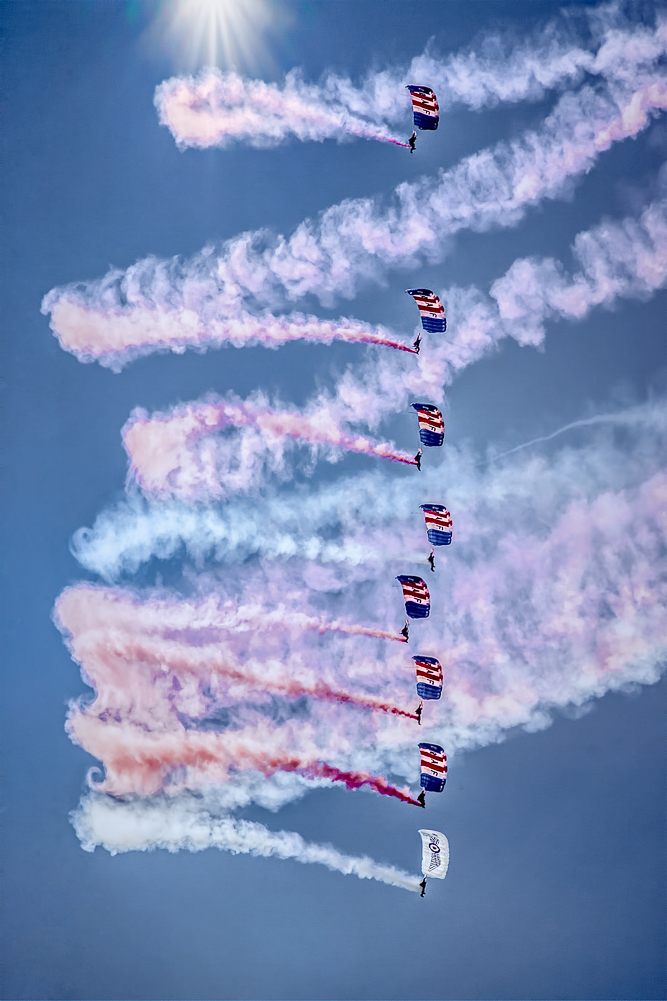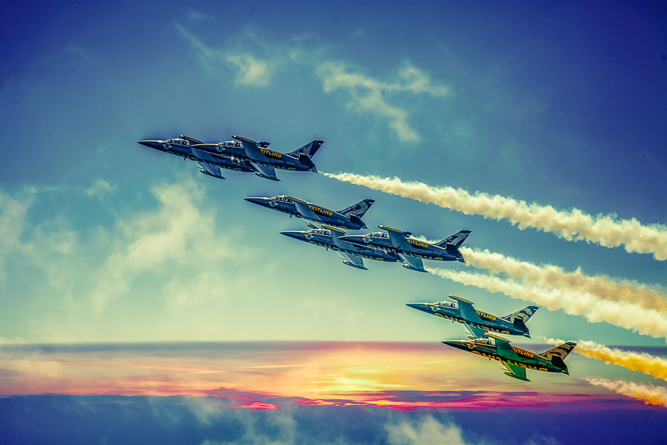De Havilland Aircraft Company Limited was a British aviation manufacturer established in late 1920 by Geoffrey de Havilland at Stag Lane Aerodrome Edgware on the outskirts of London. Operations were later moved to Hatfield in Hertfordshire. De Havilland Aircraft Company was responsible for the Moth biplane (see elsewhere on this blog for the Tiger Moth) which revolutionized general aviation in the 1920s, the 1930s Fox Moth which was the first commercial transport aircraft able to operate without government subsidy, and the Comet which was the first passenger jet to enter service, along with other innovative and important aircraft. In 1960 de Havilland became a member of the Hawker Siddeley group but lost its separate identity in 1963. Today it is part of BAE Systems plc, the British aerospace and defence business. In September 2003, this former British aerospace site became the de Havilland campus of University of Hertfordshire.
 |
| de Havilland Dragon Rapide |
In late 1933, the Dragon Rapide was designed at the de Havilland company as a faster and more comfortable successor to the DH.84 Dragon. It was in effect a twin-engined, scaled-down version of the four-engined DH.86 Express. It shared many common features with the DH.86 Express, including its tapered wings, streamlined fairings and the Gipsy Six engine, but it demonstrated none of the operational vices of the DH.86 Express, and went on to become perhaps the most successful British-built short-haul commercial passenger aircraft of the 1930s.
At the start of World War II, many Dragon Rapides were impressed by the British armed forces and served under the name de Havilland Dominie. They were used for passenger and communications duties. Over 500 further examples were built specifically for military purposes, powered by improved Gipsy Queen engines, to bring total production to 731. The Dominies were mainly used by the Royal Air Force and Royal Navy for radio and navigation training. Postwar they were used as communications aircraft by Royal Naval air station flights.
A de Havilland Dragon Rapide, the Sky Gypsy, appears in "Out of Time", an episode of the BBC science fiction television series Torchwood, in which one is accidentally flown through a "transcendental portal" and travels from 1953 over fifty years into its passengers' future. Aircraft registered as G-ACZE appears in the 1990 ITV production Agatha Christie's Poirot, "Peril at End House". Dragon Rapides appear in several films including The Maggie, The Captain's Paradise, Fathom, and the 1995 film adaptation of Shakespeare's Richard III. A Dragon Rapide was also seen in the 2004 movie, A Good Woman, starring Helen Hunt. A 1986 Spanish film, Dragon rapide,covers its historical use by Generalissimo Francisco Franco.

de Havilland DH.90 Dragonfly
The de Havilland DH.90 Dragonfly was a 1930s British twin-engined luxury touring biplane built by the De Havilland Aircraft Company at Hatfield Aerodrome.The Dragonfly shared a clear family resemblance with the Dragon Rapide, but was smaller and had higher aspect ratio, slightly sweptback wings. The lower wing had a shorter span than the upper, unlike the DH.89, and the top of the engine nacelles protruded much less above its surface because the fuel tank had been moved to the lower centre section. Structurally, too they were different: the Dragonfly had a new preformed plywood monocoque shell and strengthened fuselage. It was designed as a luxury touring aircraft for four passengers and a pilot, with provision for dual controls. The first aircraft, G-ADNA, first flew on 12 August 1935. The Dragonfly achieved maximum performance on low power, by using the new construction methods developed for the de Havilland Comet racer, and therefore was expensive to buy (£2,650). In modern terms, it was an executive transport, aimed at wealthy private individuals, often via the companies they owned.
DH 90A G-AEDU (c/n 7526) (This image) has been registered in the United Kingdom since 1992, owned by the Norman Aeroplane Trust. Originally delivered to Angola in 1937, it flew as CR-AAB and later as ZS-CTR in South Africa. When it was returned to England in 1979, it used a British registration (G-AEDU) that had been allocated to another Dragonfly but not used. It was exported to the United States in 1983 as N190DH but it was returned to England in 1992 in a damaged state and rebuilt to flying condition as G-AEDU.
























